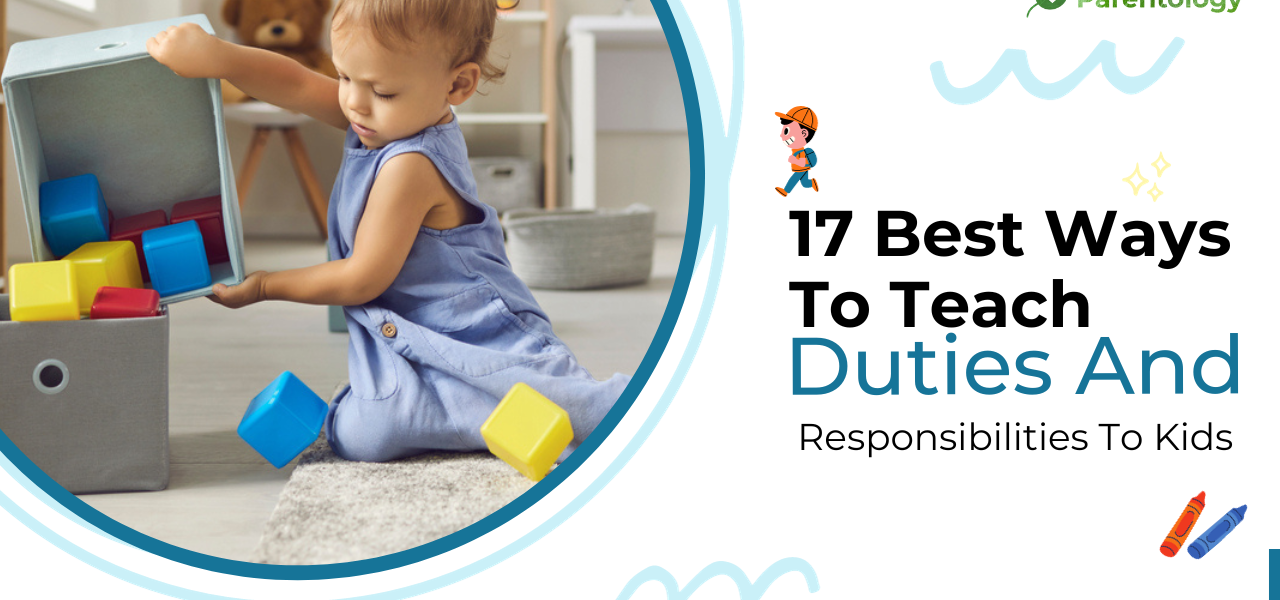Teaching Kids Responsibility: 17 Best Ways to Instill Duties and Responsibilities
Teaching kids responsibility is a crucial aspect of their upbringing, helping them develop essential life skills and contributing positively to their personal growth. In this comprehensive guide, we’ll explore effective strategies, engaging activities, and practical tips to instill a sense of responsibility in children.
Why Teaching Responsibility Matters
Before delving into the best ways to teach duties and responsibilities to kids, let’s understand why this aspect of parenting is so crucial. Instilling responsibility in children from a young age helps in:
- Character Development: Fostering a sense of responsibility contributes to the development of a child’s character, shaping them into responsible and accountable individuals.
- Building Confidence: Taking on responsibilities gives kids a sense of accomplishment, boosting their self-esteem and confidence.
- Preparing for the Future: Learning responsibilities early in life equips children with the skills they’ll need to navigate the challenges of adulthood.
Best Ways To Teach Responsibilities
1. Lead by Example
Children often learn by observing their parents and caregivers. Demonstrate responsible behavior in your daily life, showcasing qualities you wish to instill in them.
2. Introduce Age-Appropriate Chores
Assigning age-appropriate chores helps children understand the concept of responsibility. Start with simple tasks and gradually increase complexity as they grow.
3. Establish a Routine
Create a structured routine to help kids develop a sense of order and responsibility. Consistent routines make them aware of their daily duties and expectations.
4. Encourage Decision-Making
Allowing children to make decisions, even small ones, helps them understand the consequences of their choices, fostering responsibility.
5. Teach Time Management
Teaching kids how to manage their time effectively empowers them to handle responsibilities efficiently, preparing them for future challenges.
6. Use Positive Reinforcement
Acknowledge and reward responsible behavior with positive reinforcement. This encourages children to repeat actions associated with responsibility.
7. Foster a Sense of Ownership
Encourage kids to take ownership of their tasks and belongings. This instills a sense of responsibility for their actions and personal space.
8. Discuss Responsibilities Openly
Create an open environment for discussing responsibilities. Communicate the importance of each duty, helping kids understand the reasoning behind their tasks.
9. Set Realistic Expectations
Set achievable goals and expectations to prevent overwhelming children. Realistic responsibilities ensure they experience success and build confidence.
10. Promote Teamwork
Teach kids the importance of collaboration and teamwork. Working together on family tasks reinforces the idea that responsibilities are shared.
11. Provide Explanations
When assigning responsibilities, provide clear explanations of why each task is essential. Understanding the purpose motivates children to take their duties seriously.
12. Be Patient
Patience is key when teaching kids responsibility. Allow them to learn at their own pace, providing guidance and support as needed.
13. Utilize Creative Learning Methods
Incorporate creativity into the learning process. Use games, storytelling, and interactive activities to make the concept of responsibility enjoyable.
14. Emphasize Consequences
Teach children about the consequences of neglecting responsibilities. Understanding the impact of their actions encourages a sense of duty.
15. Encourage Problem-Solving
Guide kids in finding solutions to challenges they encounter while handling responsibilities. Problem-solving skills contribute to a sense of capability.
16. Celebrate Achievements
Celebrate small victories and achievements in fulfilling responsibilities. Positive reinforcement boosts confidence and encourages a proactive approach.
17. Gradual Independence
As children grow, gradually allow them more independence in handling responsibilities. This transition prepares them for adulthood.
FAQs About Teaching Kids Responsibility
Q 1. How can I start teaching responsibility to a toddler?
Ans 1: Introduce simple tasks like putting away toys or helping with small chores. Use positive reinforcement and make it a fun, interactive experience.
Q 2. What role does positive reinforcement play in teaching responsibility?
Ans 2: Positive reinforcement reinforces responsible behavior by acknowledging and rewarding children for their efforts, encouraging them to repeat those actions.
Q 3. At what age can children start taking on more significant responsibilities?
Ans 3: Children can begin handling more significant responsibilities around the ages of 8 to 10, depending on their individual development and maturity levels.
Q 4. How can I encourage a sense of ownership in kids?
Ans 4: Encourage kids to take ownership by letting them make decisions about their space, belongings, and tasks. This fosters a sense of responsibility for their environment.
Q 5. Why is it important to discuss responsibilities openly with children?
Ans 5: Discussing responsibilities openly helps children understand the importance of their tasks and promotes a sense of accountability, contributing to their overall development.
Q 6. What are some creative learning methods to teach responsibility?
Ans 6: Creative methods include using games, storytelling, and interactive activities. These approaches make learning about responsibility enjoyable and engaging for children.
Q 7. How can parents balance patience and setting expectations?
Ans 7: Balancing patience involves understanding that each child learns at their own pace. Set realistic expectations and provide guidance, adapting to their individual needs.
Q 8. Why is gradual independence important in teaching responsibility?
Ans 8: Gradual independence allows children to build confidence and capability over time. It prepares them for adulthood by instilling a sense of self-reliance and responsibility.
Q 9. How can parents teach the concept of teamwork to kids?
Ans 9: Parents can teach teamwork by involving children in collaborative activities, emphasizing the importance of working together to achieve common goals.
Q 10. What role does decision-making play in teaching responsibility?
Ans 10: Encouraging decision-making allows children to understand the consequences of their choices, fostering a sense of responsibility for their actions and the outcomes.
Conclusion
Teaching kids responsibility is an ongoing process that requires patience, creativity, and consistency. By incorporating these 17 best ways and addressing common concerns through FAQs, you’ll be well-equipped to nurture responsible, confident, and capable individuals. For more parenting tips and insights, visit Parentology.





